

Uh oh...
It appears that you're using a severely outdated version of Safari on Windows. Many features won't work correctly, and functionality can't be guaranteed. Please try viewing this website in Edge, Mozilla, Chrome, or another modern browser. Sorry for any inconvenience this may have caused!
Read More about this safari issue.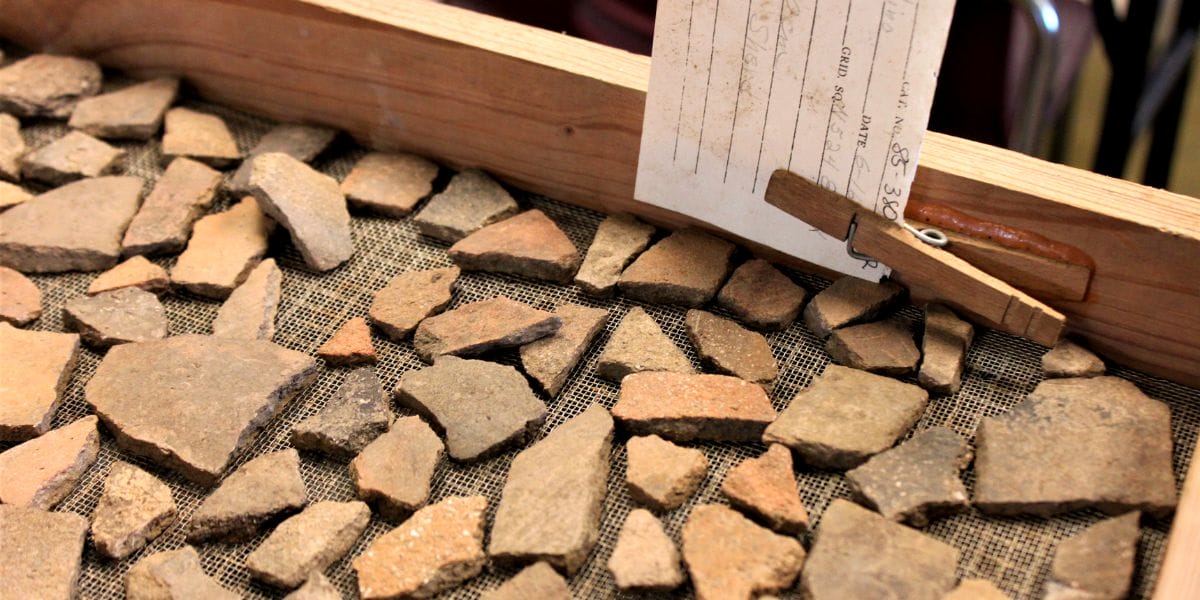

Great partnerships have been a part of our cultural story for a long time. Examples like Tom and Jerry, peanut butter and banana, Lum and Abner, coke and vanilla, Johnny and June Carter Cash have represented a greater story we could not tell on our own.
The same is true of the Arkansas Archeological Society (Society) and Arkansas Archeological Survey Team (Survey), an extension of the University of Arkansas System.
Each summer, through the Summer Training Program, the partnership between these two organizations plays out and demonstrates their strengths in a whole new way.
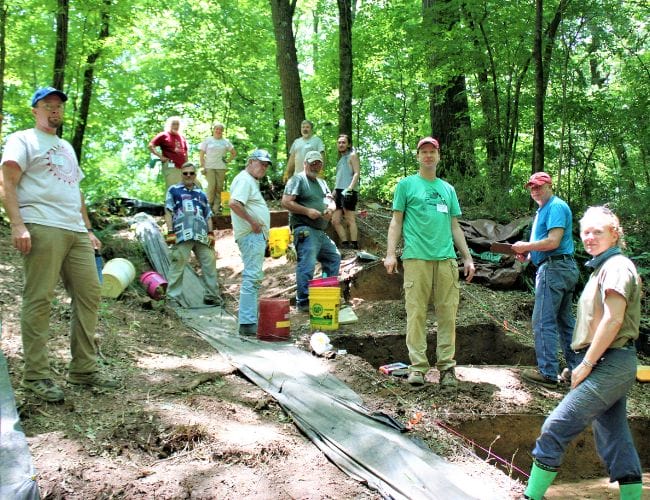
According to Marilyn Knapp, Society/Survey Liaison, the purpose of the Society is “to bring all people interested in the past together to learn, preserve and participate in research, and public outreach.” Founded in 1960, the Society has continued to connect volunteers and the interested public with projects of research and discovery. Ultimately, that’s the goal of the partnership. Volunteers who are curious and have a personal interest and maybe even educational background in archeology and etymology can put those advanced hobby skills into action through active research conducted, supervised and curated by the Survey.
This summer, the group gathered at a dig site in Sevier County, near De Queen. Through much preparation in research in their offices in Magnolia and expansion of a project that started in 1985, the group worked on a site they believe to be a ritual gathering place of the Caddo Indians. Topographical research led the Survey team to the center of a 13-mound area.
In the discovery process, they became connected with the board of directors of the Caddo Indian nation who was unaware of the site until the Survey brought it to their attention. While the Nation and the Survey team may have different hopes for the project, they are after the same goals – using the land at the excavation site to tell the story of the people who once gathered here and build context to the construction of the structure and what their purposes may have been in building it.
One might ask, how can digging in the dirt do that??
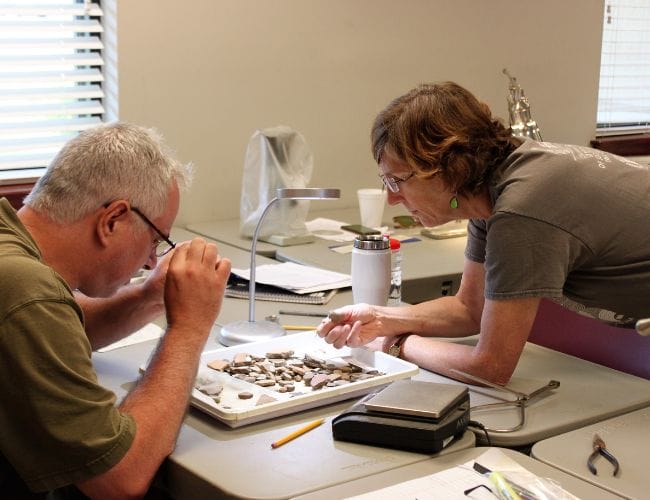
That’s exactly where the beginner part of the Arkansas Archeological Society track starts; classes and programs combine with lab research and on-site learning. After an initial course about technique, a basic understanding of the excavation process, and background of this project a beginner track team would excavate from 7 a.m. to Noon each day and then come in to learn and work in the lab each afternoon.
A second dig site is occupied by more skilled excavators comprised of staff and volunteers. And when we describe these “volunteers,” we are talking about people who have been once before and one volunteer who was in his 47th expedition with the Society. These volunteers bring their personal interests and in-depth research on the project. Many of them were bringing a variety of ideas and hypotheses as well as individual knowledge to the project.
These volunteers come from all over the state, neighboring communities, and states all across the nation. They use their own vacation time and funds to pay for their trip as well as sponsoring the trip for the Society through their annual dues, donations and bequest gifts. While in the host area, they gather at the same campsite and dine in the community and play in the area during their off time. While they get started early for the coolness of the day, they do finish their research each day around 3 p.m. where they still have time to rest and relax together in the evenings through communal meals and games around campfires at camping spots at a nearby lake.
They selected this year’s site because it had never been excavated and studied in a research method. There was initial damage to the spot from an excavation project leased on the land in the early 1990s. At that time, a large backhoe was brought in to the area, and massive divots were pulled into the side of the site and left much damage to the area. While probably hoping to discover wealthy and fancy artifacts, the damage is still apparent, and these mounds are now part of protected burial lands in the state of Arkansas. But, this damage is only driving the project participants in a more significant way. They used the main divot to build their project. They are using the cross section left behind to help them tell their story.
That’s what scientists do; they build a hypothesis with the materials they are given and keep digging for answers and results, adjusting with new discoveries.
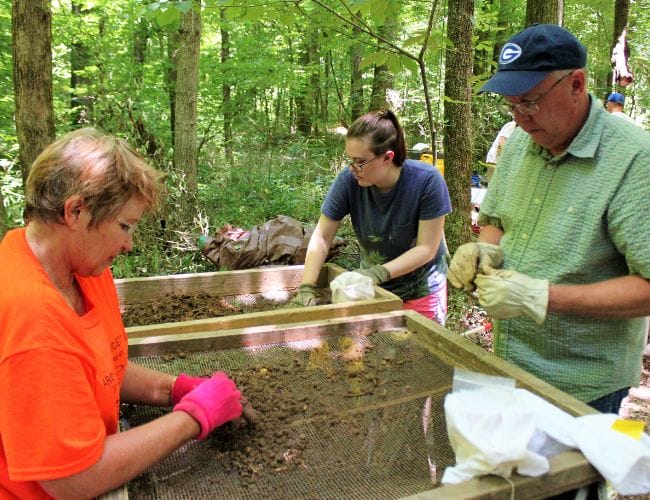
They are hoping to discover and learn more about the gathering practices of the Caddo Indian people and the construction of the mound, all one centimeter of dirt at a time.
It is important that they carefully remove dirt to find artifacts as well as fully develop the dirt wall of the structure to see the compounding dirt, evolution of the mound, and different soil types involved.
Along the way, they do discover things like arrowheads, bricks, coins and pottery pieces. How deep in the dirt, location within the mound, the type of soul surrounding it, all begin to help unfold a story and timeline of the Indian nation. Why, where, and how they built the mound are interesting. Was there a structure here on a lower level or top of the mound? Was it multilevel in one gathering spot or did the sub mounds act as smaller gathering spaces?
Some of the discovery comes through speculation while others developed from written traditions, previous experiences, and knowledge of the Caddo Indian people. It’s fascinating to meet with the tribe representatives and combine those conversations with what was written and researched about the occupations, building techniques, family structures and what is known historically about how they used the land.
But the real treat of the whole experience comes when all of that knowledge taken out of the office to the classroom where tools like shovels and trowels and mapping and surveying equipment start unfolding a story.

But this 2019 project is part of a bigger story. In 1985 and 1986, another excavation project was conducted in the same county around the same tribe, but it researched a completely different part of the tribe’s behavior. This time, the Survey was looking at the salt-based construction site used to make vessels and instruments used by the tribe. The spring bringing water in was salt based. So much so that those in the lab could taste it in some of the artifacts, artifacts dated between 1300-1400 or 1500-1600. The research team in the lab are reboxing the artifacts and looking at foodways (practices related to making and consuming food), trading, and organization of the tribe settlement. This project has sat on the shelves of the Survey office for 33 years and should be completed this summer, readying them for lectures and article features.
The archeological experience uses so many senses (and intuition). One research botanist on the project started her first day by walking and watching and looking. She noticed so many medicinal plants on top and over the mound that were not growing in the wooded area leading up to them. Her observations told her these were brought in to the area and were either part of the diet of the people who gathered here and later may have been buried on the site, or were introduced as part of the ritual and left behind.
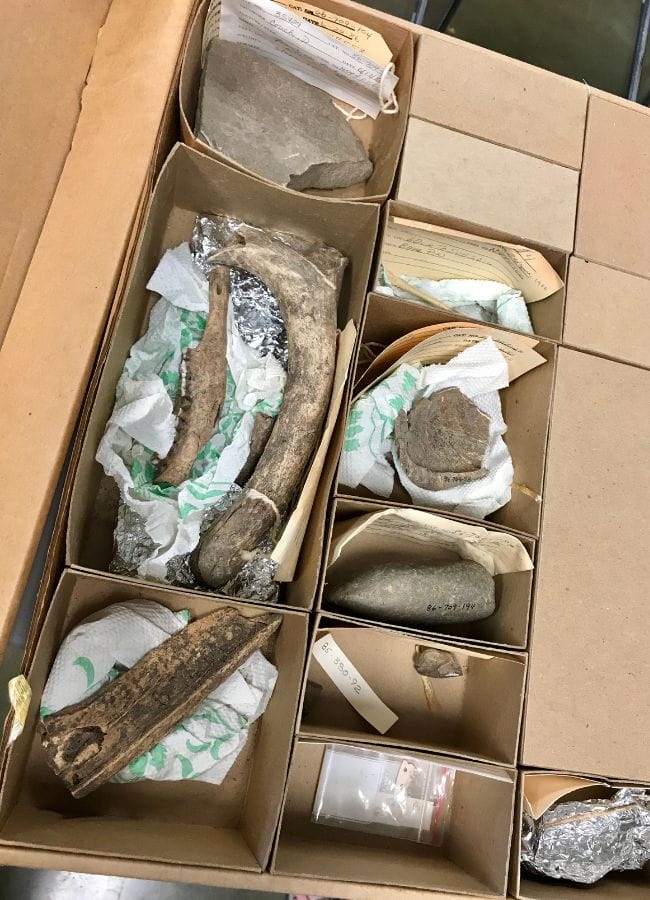
Sight and touch seem like obvious senses to be engaged from that example as well as looking for artifacts and sifting through the dirt. But sound may not be expected. The way the blade of the shovel hits the earth can provide a distinction of a quick shift from sand-based dirt to clay-based dirt. The more dense and firm dirt offers a deeper sound, while the sand offers a higher pitch “ding” as the sharp blade cuts away.
And those distinctions are pointed out by experienced volunteers. Last year, the Arkansas Archeological Society volunteers turned in more than 11,000 hours on projects. These individual hours save so much money for the Survey staff and help move big research projects to a deeper level in a quicker amount of time. Over the two weeks, they complete multiple years of work.
The Arkansas Archeological Society has other projects beyond the Summer Training Program. They focus each March on Arkansas Archeological Month and gather in regional meetings throughout the year. One of the more significant projects they conduct is the scholarship program for research projects across the state. These funds are provided by volunteers, extra donations and estate plans. Groups like the Survey and other organizations may apply for the funds which help continue regional research.
Learn more about this summer’s project and future works by following @Aras_SAU on Instagram, Arkansas Archeological Society on Facebook, or #aastp2019.
Join the Conversation
Leave a Comment
2 responses to “Archeological Program Helps Volunteers Dig Deeper”
 Leave a Reply
Leave a Reply
We do the work.
You check your email.
Sign up for our weekly e-news.
Get stories sent straight to your inbox!












 Leave a Reply
Leave a Reply
It was so cool to have them in our backyard and to see all the things they were learning. The open door to the Caddo Indian nation and the local conversations this started have been so good for our community!
[…] Archeological Program Helps Volunteers Dig Deeper […]